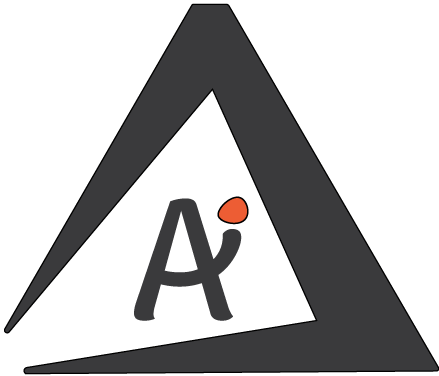The concept of technology has constantly been advancing and evolving, introducing ultimate ease and effectiveness in various aspects of life. From facilitating online interviews for remote jobs to digital shopping and tracking features, the impact of technology is undoubtedly critical and ever-lasting.
Among all the comfort and benefits these digital advancements provide, OCR is one of the most prominent tools that has brought revolutionary changes in our daily lives, especially in the education sector, including supporting multiple international languages, overcoming reading challenges, and personalized learning experiences.
Consequently, in today’s discussion, we will elaborately discuss the basic concepts of OCR technology along with its benefits in remote learning. So, let’s dig in…
OCR – Optical Character Recognition

OCR technology, abbreviated for Optical Character Recognition, is a process of converting the image-text into a machine-readable and editable form.
For example, if you scan a receipt from an OCR tool, your device will save the text content into a machine-understand form as well as provide it a scanned form that enables you to edit, search, count, or save the text.
OCR is primarily used to extract text from images and print media. It reduces the use of prints and hard copies and securely saves important text information, including legal documents, forms, contracts, documents, and other forms of data. It also enables users to store all this paperless data more effectively.
Moreover, OCR technology is often associated with artificial intelligence, which boosts efficiency and productivity. From implementing data analytics software for processing text databases to reducing the need for workforce to manual work, OCR greatly impacts a wide variety of industries.
How OCR Technology Can Help With Remote Learning?

Let’s have a closer and more detailed look at the impact of OCR technology on remote learning.
1. Support Multiple International Languages
OCR technology breaks language barriers and helps students from diverse backgrounds and locations develop better and more effective learning skills. By enabling students to extract texts from a wide range of languages and translate them into their preferred ones, OCR technology can help develop inclusion and team collaboration among students from different cultures.
With OCR, students can not only easily understand each other’s ideas and perspectives but also gain more knowledge and new experiences. So, whether the student is in primary education standards or learning new languages, OCR can help them in having effective and comprehensive experiences.
2. Customized Learning Experiences
OCR Technology helps students customize their learning processes according to their individual preferences and needs. OCR enables its users to adjust and tailor the text, helping them edit the language, font, size, color, style, background, and other features, creating an effective and comfortable experience.
Moreover, students with visual problems like impairments or weak eyesight can personalize their digital books and notes according to their needs. They can change the text color into a more prominent one, increase the font size for better and trouble-free sight, or simply change the background style or color to give a creative touch, providing ultimate ease in learning.
3. Overcome Reading Challenges
According to the research reports by the International Dyslexia Association, 6% to 7% of school-age children suffer from some kind of Learning Disability (LD), and 85% of them qualify as associated with challenges in reading and writing.
Therefore, the text-based education process is certainly not easy for every child. However, OCR enables students to listen to their homework, books, notes, and lectures and helps them understand them easily. Moreover, the students can quickly search the terms and find more data, related images and videos, facts and statistics, and charts, regarding their studies on the internet, making the learning process smooth and trouble-free.
4. Facilitates the Teaching Faculty
Managing a digital classroom containing students from different backgrounds, cultures, perspectives, and languages is certainly not simple. From writing down lectures and lessons to teaching the same concepts to every student, a teacher’s duties are quite complex and time-consuming.
However, with the advancements in OCR technology, teachers can not only send theory lessons digitally to students but can teach them in their language and then convert the work into their understandable language for quick and effective working. By using OCR, teachers can easily check the spelling and grammar in work, fix mistakes, grade the students, and perform all other duties quickly, saving time for focus and best tutoring experiences.
5. Limit Physical Material Needs
The traditional classrooms often need students to carry heavy books and huge piles of registers, along with physically writing down notes and making lesson material. However, implementing OCR technology can make the learning process quick and effective.
With OCR tools, students can save their notes and lessons and related images, photos, and tables digitally on their devices and access them quickly by making digital study guides. Moreover, they can easily access the notes and search for difficult terms, limiting physical learning material needs.
6. Facilitates Inclusion and Real-Time Collaboration
By providing every student with digital access to lessons and notes in their understandable language, OCR technology can play a critical role in promoting inclusion and team collaboration among students.
For example, a group of students can digitally write their notes and mention their ideas in their document, which they can send in a shared document. As every student can use their preferred language and text style, OCR can turn the learning and brainstorming session between students into creative and effective.
Conclusion: OCR – A Potential Revolution in the Education Sector
OCR technology is rapidly changing the landscape of the education sector bringing revolutionary waves and potentially impacting its future. From making the learning material more accessible and customized for students to helping teaching-faculty make lessons interactive and creative, OCR has great potential to transform the learning experiences.
Moreover, as this remarkable technology continuously evolves and grows, the effect of OCR technology will extend beyond extracting text, personalizing it, and making editable text formats, making the teaching process more innovative.

